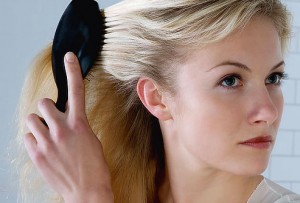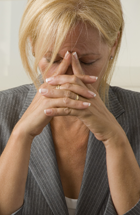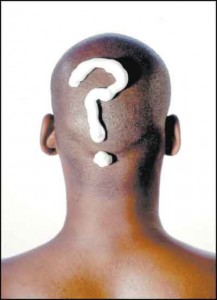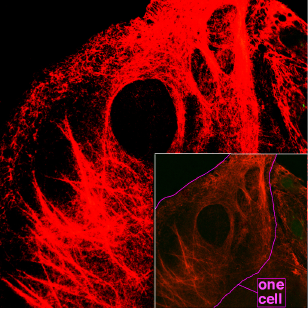COMBAT HAIR LOSS: How To Grow Your Hair Back (Part 4)
26.11.2012 in COMBAT HAIR LOSSCOMMON BALDNESS

It is the hormones of course that trigger Androgenic Alopecia at the onset of puberty, resulting in hair loss and patterning in 90% of men and approximately 50% of women. This is a major degenerative shift in the hair growth pattern universally referred to as Common Baldness or Male Pattern Alopecia and Female Pattern Alopecia. Given that this change is genetically pre-determined, it is therefore extremely difficult to slow or reverse this very gradual but definite deterioration in these pre-determined areas of the scalp. Androgenic Alopecia is triggered, as its name suggests, by the androgens (masculinising hormones present of course in both sexes).

At puberty the male sex hormone, testosterone, appears in both sexes and is partially converted by the enzyme 5-? reductase into the much more active form di-hydroxytestosterone (DHT). It is this more active form DHT that causes miniaturisation and eventual loss of the hair follicle in pre-determined areas of the scalp in cases of Androgenic Alopecia.

The new hair that is produced by the dermal papilla has a slightly shorter growing (anagen) cycle and is smaller in both length and in its diameter. The cycle is repeated, with each successive hair getting smaller and smaller, reverting eventually to the very fine baby (vellus) hair. Eventually the dermal papilla ceases to function, hair growth production stops and the hair follicle finally atrophies and is lost. These dormant dermal papillae can be reactivated by suitable chemical stimuli for up to about five years after hair production ceases before they are permanently lost.
The scalp shows the characteristic bi-temporal recession and movement of the front hair line in men with thinning of the frontal and crown areas, proceeding in the pre-determined stages, leading ultimately to complete baldness in some cases.

Women usually have a different pattern of hair loss. The hairline is retained and thinning occurs behind the hairline on the frontal and crown areas and often the areas above both ears are affected. Complete baldness in women is not normal, although it is possible for some women to experience hair loss in the male pattern.
There are a large number of treatments available for use for MPA and FPA and many clinically proven agents that will promote hair growth in cases of Androgenic Alopecia (and many more that will promote the growth of hair in unacceptable areas) and these treatments will certainly assist in stabilising the position and promoting modest re-growth but any changes are not dramatic, they are marginal at best and should be seen as “buying time”, delaying the onset of hair loss. Probably the most effective treatments will buy you five years, possibly a little more, before you are back in the same position. This result can certainly be worth achieving but you can liken it to trying to run back up the genetic down escalator. The condition will revert eventually to its genetically pre-determined position.

Now the hormones may be masters of the biological universe but they are by no means the only agents or conditions that can affect hair growth and many of these can have a substantial, sometimes devastating effect. We need to consider conditions that have both a negative effect, i.e. they must be present and correct to achieve normal hair growth and without them hair growth will be adversely affected. In the second group, the agents or situations that can positively affect hair growth, they can increase the growth response above what would normally be expected. This is the second group, the “positive effect” group.
We will consider the first group, the “qualifying” group; they are necessary, but only to return to the genetic “norm”, but it is vital that they are in place and we will, of course, look then at the second group, the genetic “boosters”, the fireworks, the ones that can lift you, within reason, above the genetic norm. It is important to understand their significance and the way in which they fit into the overall pattern of hair growth.
Do you have Hair Loss Problems, read our Hair Loss Help













